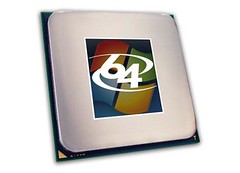 In recent times, the 64 bit architecture gets more and more important. Recently there have even been rumors that Microsoft is going to ship the next Windows version, 8, in 64 bit exclusively. Whether this is true remains to be seen. But one thing is sure: The wider address space helps to make better use of modern processors and thus enhance your system’s speed. If your computer has 4 GB of RAM, for instance, you will only be able to make full use of them if you’re using a 64 bit operating system — otherwise, around 0.5 Gigabyte are ignored.
In recent times, the 64 bit architecture gets more and more important. Recently there have even been rumors that Microsoft is going to ship the next Windows version, 8, in 64 bit exclusively. Whether this is true remains to be seen. But one thing is sure: The wider address space helps to make better use of modern processors and thus enhance your system’s speed. If your computer has 4 GB of RAM, for instance, you will only be able to make full use of them if you’re using a 64 bit operating system — otherwise, around 0.5 Gigabyte are ignored.
However, some problems could arise that you have to overcome. Most importantly: Your processor has to be 64-bit capable. You can detect this from extensions to its name, such as “x64”. Also, you should have access to corresponding drivers for all system devices (that is, graphics card, sound card, network controller, printer etc) — as 32-bit drivers are most not suitable for 64-bit.
Regarding supported programs, there is a highlight: Nearly any 32-bit application runs on 64 bit as well. Exceptions are only system-near programs that hook deeply into Windows, such as disk partitioners or antivirus programs. The other way round, real 64 bit software can make full use of the processor and should thus run better than its 32-bit variant. Though, much depends on the way the application is optimized for 64 bit, that is, how well it is making use of the possibilities that the 64 bit processor offers.
